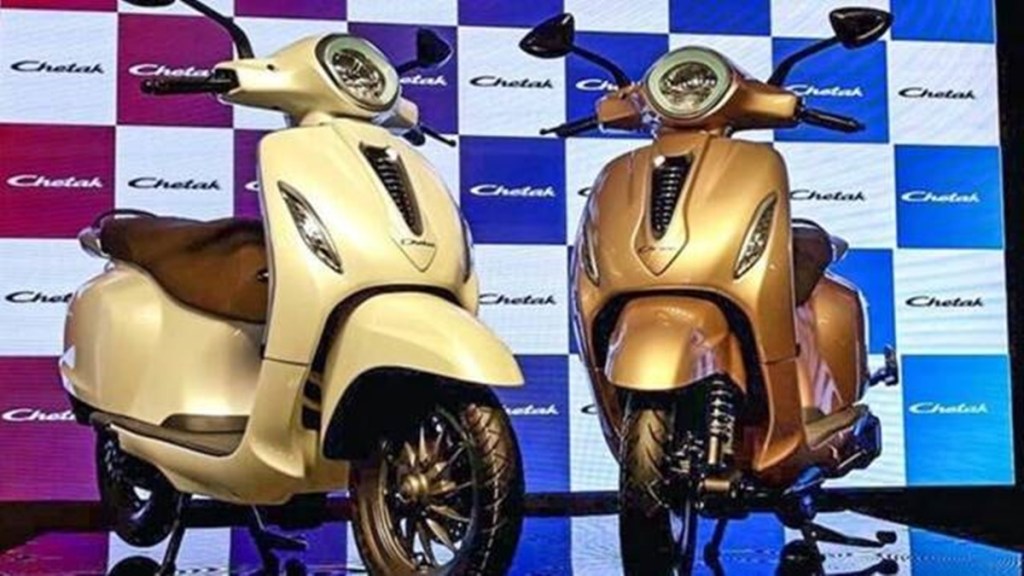Three years after making its debut in the electric two-wheeler space, Bajaj Auto is cranking up its play in the segment, where its rivals have taken a firm lead, amid fears of the government withdrawing incentives.
The two-wheeler maker has ramped up output and overhauled its supply chain network.
Also read: Amidst weak IT spends, Accenture provides a muted guidance for Q4
But it will have to push harder to get closer to its rivals. Market leader Ola Electric sold nearly thrice as many electric two-wheelers as Bajaj in May, while TVS Motor Company sold two times more.
TVS Motor’s iQube debuted in the same month as Chetak, but the Chennai-based company managed to scale up its presence faster. Hero MotoCorp-backed Ather Energy is also ahead of Bajaj in sales volumes.
In May, Bajaj retailed a little over 10,000 units of Chetak for the first time. Prior to that, its monthly sales volumes were in the range of 3,000-5,000 units.
This, despite Bajaj being first among the country’s legacy two-wheeler brands to jump onto the EV bandwagon with the electric Chetak in January 2020.
However, pandemic-induced bottlenecks in the logistics network, a cautious approach to production ramp-up due to uncertainty over product acceptability, and lack of adequate public charging options slowed the Chetak’s pace.
The Pune-based company now claims to have sorted out the glitches in the supply chain network that prevented it from scaling up production and limited the reach of the product.
Rakesh Sharma, executive director, Bajaj Auto and CEO of Chetak Technology, told FE, “The supply chain work we did allowed us to scale up due to better availability of parts. It also allowed us to do price adjustments due to lower costs.”
The supply chain overhaul lowered costs by `20,000 to `25,000 per unit and pushed up sales to 10,000 units a month. The company intends to keep the production rate at these levels.
All components and systems of the Chetak, barring cells, are made in-house or sourced from 55 vendors within the 25-km cluster around the factory in Pune. The new factory at Bajaj’s existing plant at Akurdi commenced operations in April 2022 with a capacity to roll out 800 Chetaks a day, or around 250,000 units a year.
Also read: Gaming VC Lumikai announces $50 million second fund to invest in pre-seed to Series A rounds
The boost in production complements the simultaneous expansion of retail footprint. Bajaj is expanding the number of Chetak sale sites from 85 to 150, thereby covering 80% of the high-speed two-wheeler market.
Sharma cautioned that the government reducing subsidies under the Faster Adoption and Manufacturing of Electric and Hybrid Vehicles (FAME) scheme, which has pushed up prices by `15,000-25,000, will impact demand. However, the hit will be for a short term before the buyer adjusts to the new price levels.
“The operating economics still favours electric over ICE (internal combustion engine) vehicles,” Sharma said. From `122,000, the price of the Chetak has jumped to `144,000 (ex-showroom).
Sharma said Bajaj is planning multiple product variations in the Chetak portfolio, which will be seen in the short term. Bajaj Auto has earlier announced plans of introducing one new Chetak variant every year starting 2023.









